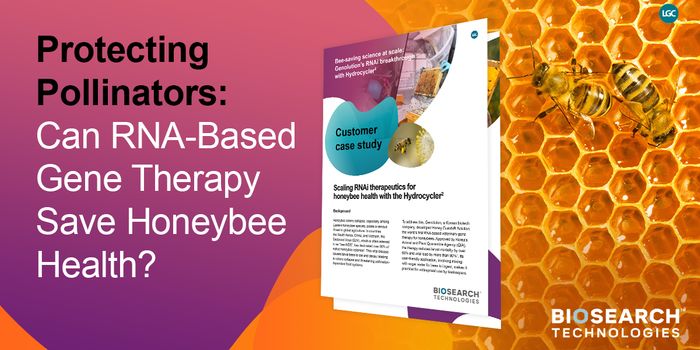Transgenic Engineering Takes Dangerous Toxin Out of Corn
While there is a lot of skepticism surrounding genetically modified foods, they have helped solve serious problems in agriculture. One example: researchers have now used genetic engineering to make a type of corn to be free of highly toxic chemicals that are byproducts of an infection that affects corn crops. The corn is made to produce a small RNA molecule to halt production of aflatoxin, which can render an entire harvest inedible. This is not a genetic modification that seeks to sell more of one company's pesticide, this is a genetic modification that seeks to improve food security for the developing world by saving crops that would otherwise be lost. Monica Schmidt explains the work in the following video; she led the researchers, who reported the work in Science Advances.
Aspergillus fungal strains infect crops worldwide, and when plants are infected, metabolites called aflotoxins get produced. Those toxins have serious affects on human health; they have been linked to an increased risk of liver cancer, heightened susceptibility to infectious diseases like malaria and HIV, and stunting the growth of children. The U.S. tests for these toxins, destroying crops that are assayed to have 20 parts per billion (or one drop in 22,000 gallons). However, in the developing world, where crops can't be incinerated on a whim, thee is also very little testing for aflotoxins. Schmidt, an Assistant Professor in the UA's School of Plant Sciences and a member of the UA's BIO5 Institute noted that measurements of up to 100,000 parts per billion have been detected.
"Aflatoxin is one of the most potent toxins on the planet," Schmidt said. "Usually it won't kill a person outright, but it can make you very sick."
Schmidt and her team have built on previous work that found that the fungus exchanges nucleic acid molecules, the building blocks of DNA and RNA, with the plant it infects. The researchers wanted to test a method called RNA interference to disrupt that process. Their method is called Host-Induced Gene Silencing (HIGS).
"When I read about this in the literature, I thought, 'Why can't we make a Trojan horse to shut off that toxin?'" explained Schmidt. "We introduced an engineered DNA construct into the corn that passes the RNA into the fungus when it infects the corn plant."
Inside of their edible kernels, the engineered corn plants carry the genetic code for small, roughly 20 base pair long RNA molecules. "The corn is constantly producing that RNA during the entire development of the kernel," Schmidt explained. "When the kernels come in contact with the fungus, the RNA moves over into the fungus."
This short RNA then 'interferes' with the corresponding fungal RNA, matching up with the code for an enzyme that is crucial to toxin production and thereby shutting down toxin manufacture. The fungus can continue to grow in the corn, but now it is harmless to eat. The video above is an animation from Nature illustrating RNA interference
Researchers have tried many approaches to rid corn of aflotoxin, mostly after the toxin has already made its way into the plant. This method aims to stop it from ever being present. When the scientists tested the corn they engineered; corn was infected with Aspergillus and allowed to grow for a month. Unmodified control plants contained toxin at 1,000 to 10,000 parts per billion, while in the modified plants, toxin levels were undetectable.
"The detection limit is not zero, but low enough for the corn to be safe to eat," Schmidt said.
The investigators took the time to assay for side effects. Co-author Rod Wang led the charge to check the transcripts of thousands of RNA molecules in the modified plants, finding no change between transgenic and non-transgenic kernels.
"This corn plant would be like any other," she said. "The only trait that sets it apart is its ability to shut down the toxin production. It shouldn't have any other effects, but obviously, a lot of downstream testing will be required before it could be grown in the fields."
Schmidt and her team noted that they selected the open access journal Science Advances intentionally; "we want anyone with an internet connection to be able to access our results, especially in Africa, where aflatoxin is such a big challenge to food security."
Sources: UA News, Science Advances








